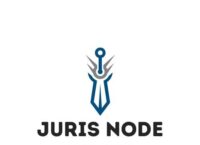India’s rapid economic growth and geographical location have contributed to its status as a regional financial power. However, alongside the formal financial system, the country also harbors an extensive network of informal money exchanges and tax evasion techniques. These informal channels, while prevalent in society, have made India vulnerable to money laundering activities. This article delves into the vulnerabilities posed by India’s informal money exchanges and tax evasion practices and their role in facilitating money laundering.
The Informal Money Exchange System
India’s informal money exchange system, often referred to as “hawala,” operates outside the formal banking channels. Hawala is a traditional system of transferring funds between countries or regions, relying on a network of trust and personal relationships. In this system, money moves through a series of intermediaries without any physical transfer, enabling quick and discreet cross-border transactions. While hawala has legitimate uses, such as facilitating remittances, it also provides fertile ground for money launderers to move illicit funds undetected.
Tax Evasion Techniques
Tax evasion is another pervasive issue in India, with various methods employed to evade taxation. The underreporting of income, off-the-books transactions, and the use of shell companies to hide assets are some common tax evasion techniques. The informal economy, which operates outside the purview of tax authorities, contributes significantly to this problem. As tax evasion facilitates the generation of unaccounted funds, it inadvertently creates opportunities for money laundering.
Vulnerabilities to Money Laundering
The informal money exchange system and tax evasion practices create vulnerabilities that money launderers exploit. The lack of proper documentation and transparency in informal transactions allows criminals to blend illicit funds with legitimate funds, making it challenging for authorities to detect and trace the source of money. Moreover, the absence of regulatory oversight and reporting requirements in the informal sector provides a safe haven for money laundering activities to flourish.
Role of Informal Channels in Money Laundering
Money launderers leverage informal money exchange systems to move funds across borders with minimal scrutiny. They capitalize on the trust-based nature of hawala transactions, making it difficult for law enforcement agencies to track the movement of illicit funds. Additionally, the anonymity offered by these channels shields the identities of those involved in money laundering, further complicating investigation efforts.
The Nexus Between Tax Evasion and Money Laundering
The connection between tax evasion and money laundering is significant. Money launderers often use the proceeds of tax evasion as a starting point for their illicit activities. By channeling untaxed money through informal systems, they can integrate it into the formal financial system, making it appear legitimate. In this way, the cycle of tax evasion and money laundering perpetuates, making it crucial to address both issues in tandem.
Impact on the Economy and Society
The prevalence of informal money exchanges and tax evasion takes a toll on the Indian economy and society. Tax evasion results in reduced government revenue, limiting the resources available for public welfare and infrastructure development. It also distorts market competition and hinders economic growth. Moreover, the flow of illicit funds through informal channels fuels various criminal activities, including terrorism, drug trafficking, and human smuggling, leading to social instability and security challenges.
Government Initiatives to Combat Money Laundering
Recognizing the seriousness of the issue, the Indian government has taken steps to address money laundering vulnerabilities arising from informal money exchanges and tax evasion. Stricter enforcement of tax laws, enhanced reporting requirements, and digitization of financial transactions aim to curb tax evasion. Additionally, India has implemented the Prevention of Money Laundering Act (PMLA) to tackle money laundering comprehensively and bring informal money exchange networks under the regulatory purview.
Conclusion
India’s informal money exchange system and tax evasion practices have long been deeply ingrained in its society. While these practices may serve certain legitimate purposes, they have also made the country susceptible to money laundering activities. The nexus between tax evasion and money laundering creates a challenging environment for regulators and law enforcement agencies. However, the Indian government’s efforts to address these vulnerabilities through stricter enforcement and regulatory measures are steps in the right direction. By curbing informal money exchanges and tax evasion, India can fortify its financial system against money laundering, safeguard its economy, and protect society from the perils posed by illicit financial activities. A multi-pronged approach, involving technology, global cooperation, and comprehensive legislation, is essential to combat the scourge of money laundering and promote financial transparency and integrity.
If you found this article helpful, you may be interested in Advocate Vijay Pal Dalmia, along with Advocate Siddharth Dalmia‘s book, “A Guide to the Law of Money Laundering”. This comprehensive guide provides even more in-depth information on how to recognize and prevent money laundering. It’s packed with practical tips and advice for staying one step ahead of financial criminals.





